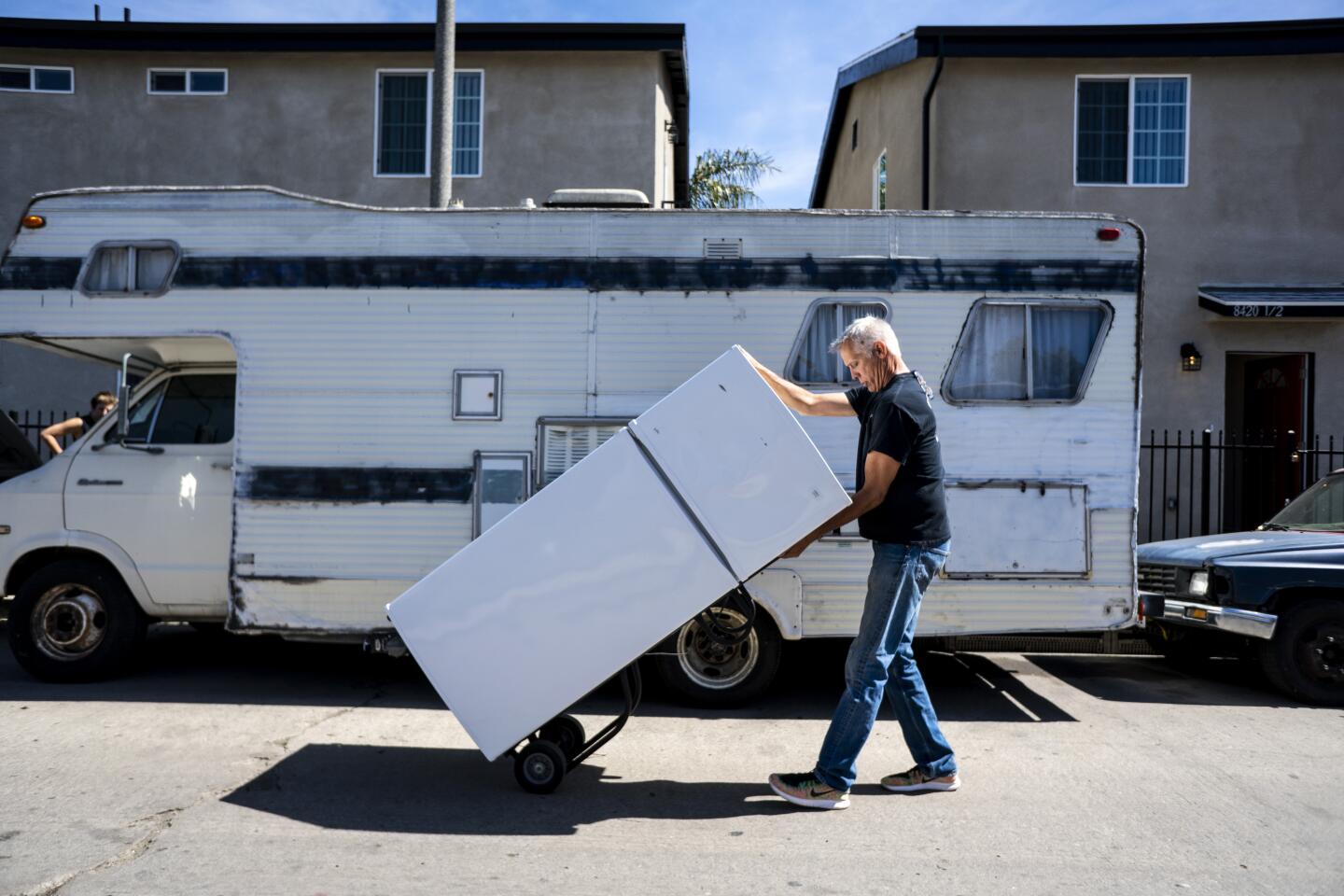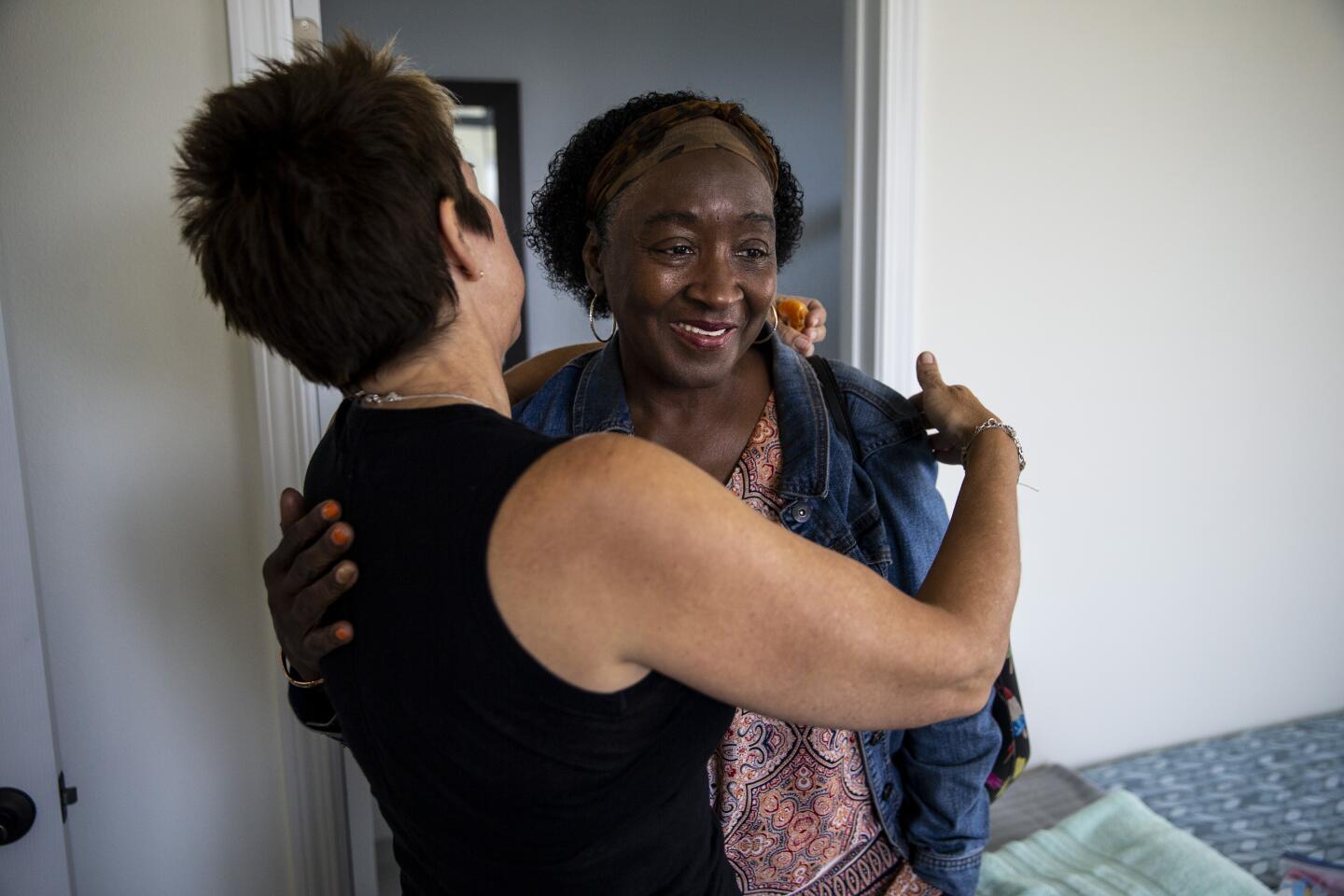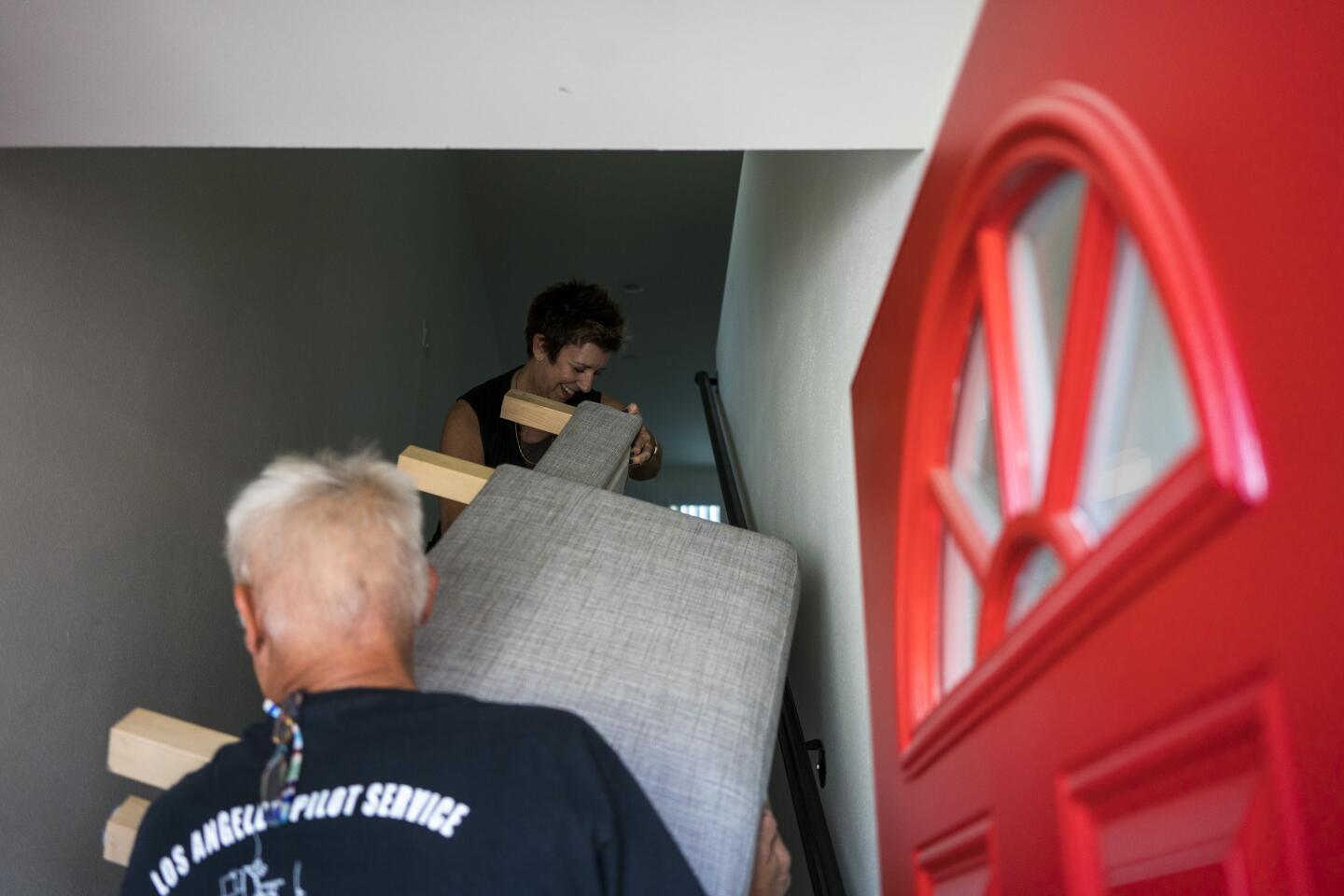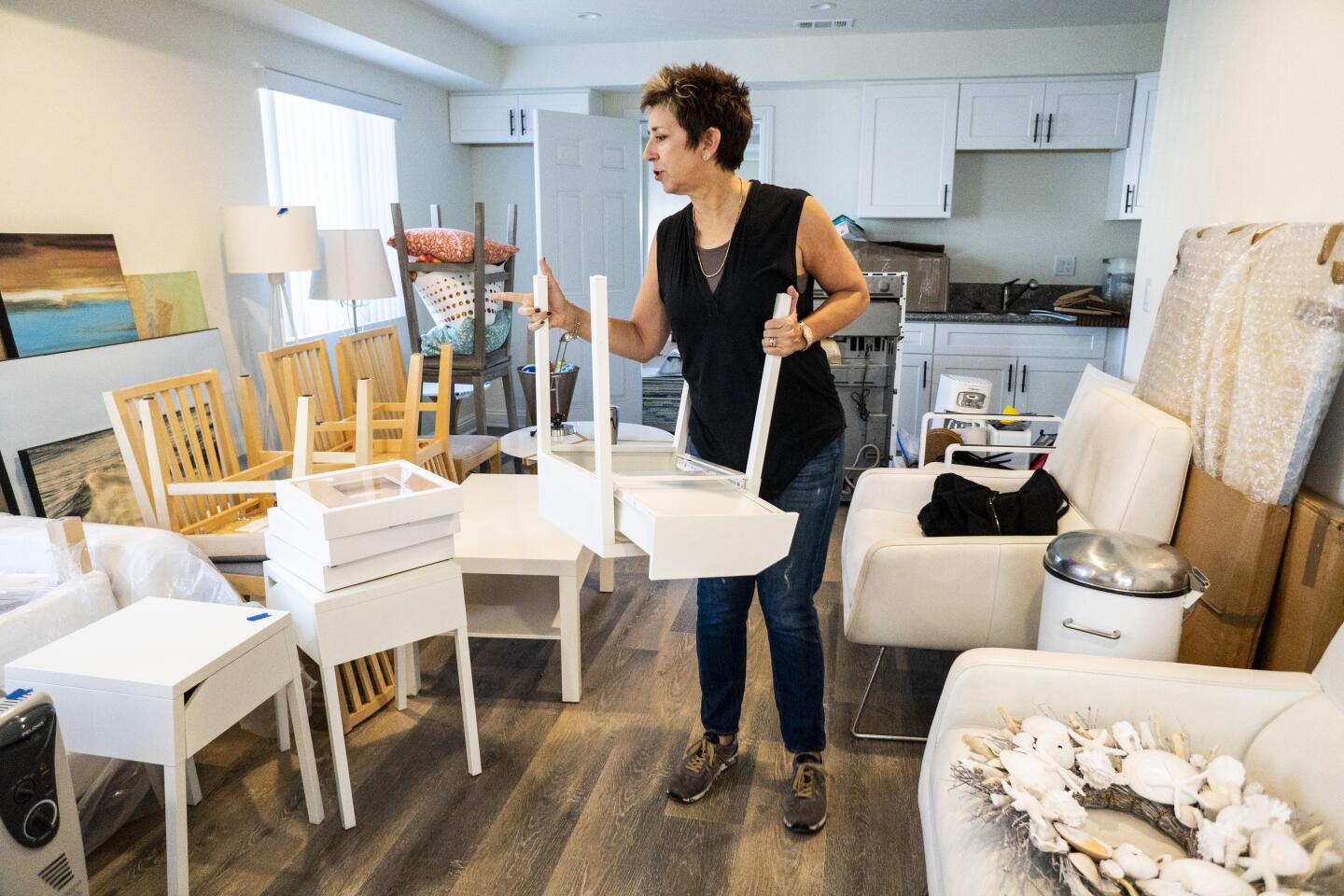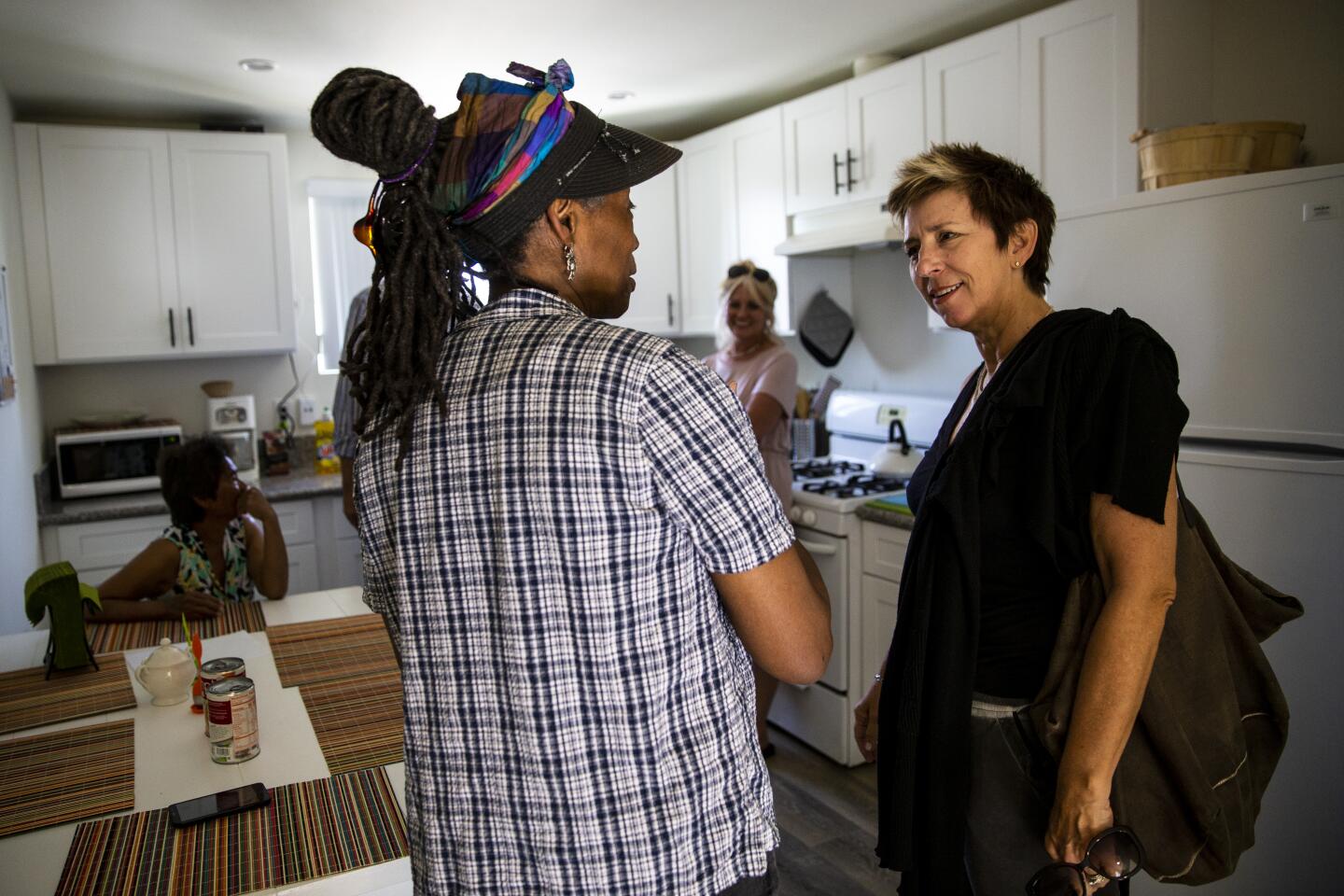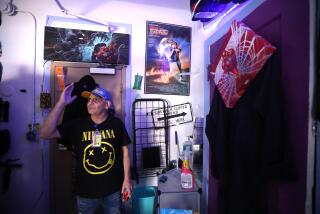To house almost 600 homeless people, a Venice couple are working outside the system
- Share via
It started with a spreadsheet of income and expenses showing a modest profit could be made by housing homeless people.
The profit hasn’t materialized yet. But Heidi Roberts and John Betz, a Venice couple who decided to make their mom-and-pop rental business part of the solution to homelessness, have shown that they can get people off the streets while operating outside the government-run system.
In just a year, the couple have provided homes to 98 people, many of whom were placed by homeless services agencies across Los Angeles County.
Currently, 51 formerly homeless tenants live in three newly built properties that Roberts and Betz bought in South L.A. Their enterprise grew out of Roberts’ experience as a longtime volunteer with homeless agencies. She saw firsthand caseworkers’ struggles to find housing for their clients.
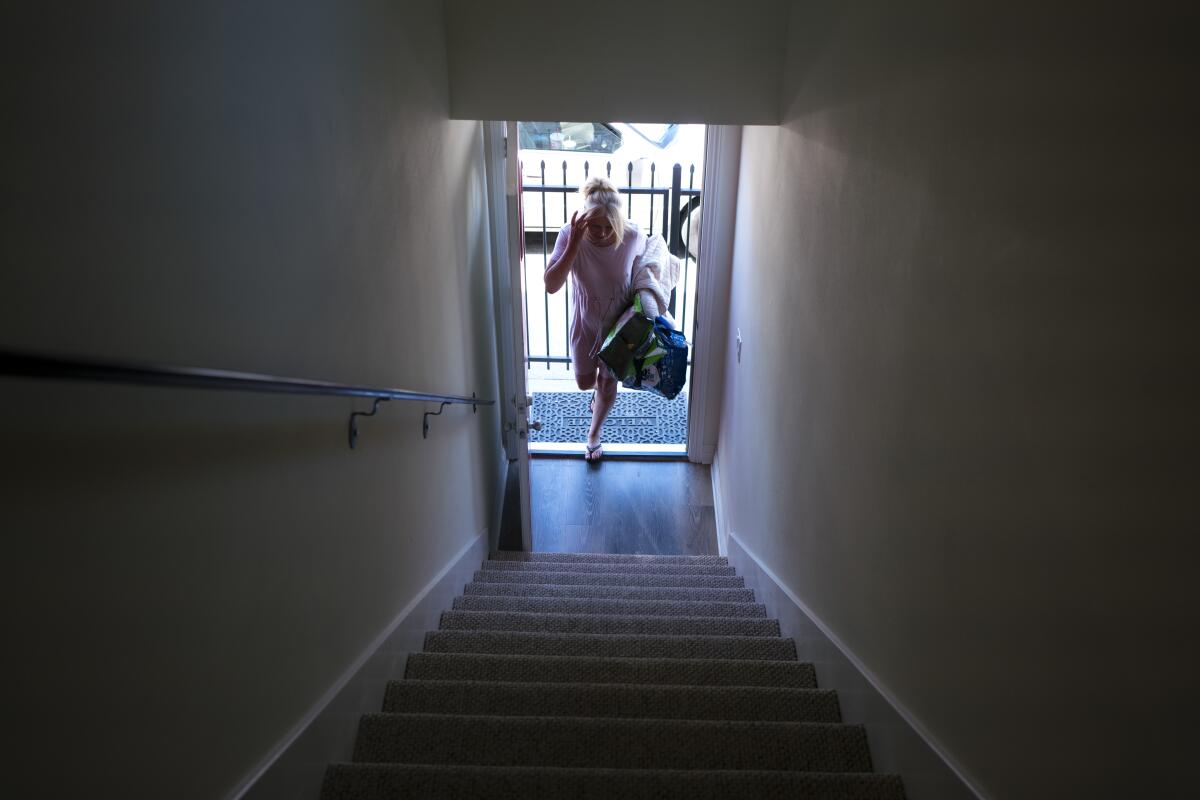
“Ten years ago, John and I were jumping up and down saying, ‘Housing, housing, housing,’ and they just never seem to get housing done,” she told The Times the day they opened their first home last year. ”So that’s why John and I said, ‘Screw it. Here’s housing.’”
Now Roberts and Betz, who live with their teenage son in a converted Gold’s Gym in Venice, are embarking on a new phase. They incorporated a nonprofit this year called Haaven, recruited business partners and investors and wrote up a plan to turn out 480 more beds within a year.
They see themselves as non-expert homeless activists and unabashedly predict that they will produce housing faster than what’s available through the conventional, nonprofit model — and at a fraction of the cost to the public.
Providing the housing will be the easy part, Roberts and Betz say. With their personal funds now tied up in the three properties, they’ve made new arrangements to lease homes from development companies that buy up aging single-family homes in South L.A. and replace them with large, family-oriented duplexes. The supply is plentiful.
The finances work because they will rent each bedroom in each five-bedroom duplex to two people, creating a dorm-like setting that has been frowned upon by mainstream homeless advocates but makes market-rate housing affordable to those living on scant Social Security benefits or other income.
What the couple have learned from a year’s experience is that having 20 to 30 people with physical and emotional issues living in close proximity is challenging.
Their answer — also a departure from conventional practice — is putting a no-nonsense house manager in charge. Currently that’s Rachel Estrada, who has no degree in social work but is trained as a peer specialist. She knows homelessness firsthand.
“Trauma, dysfunction in families, homelessness, being unemployed,” Estrada said, ticking off her own experiences that help her connect with her clients. “Not everybody here lived on skid row. There are people who just got derailed.”
Estrada came to the team from SHARE — a Culver City group that leases single-family homes and places homeless clients in them, two to a bedroom. The idea is both to pool the rent of low-income tenants and to counter the isolation the group considers an impediment to escaping homelessness.
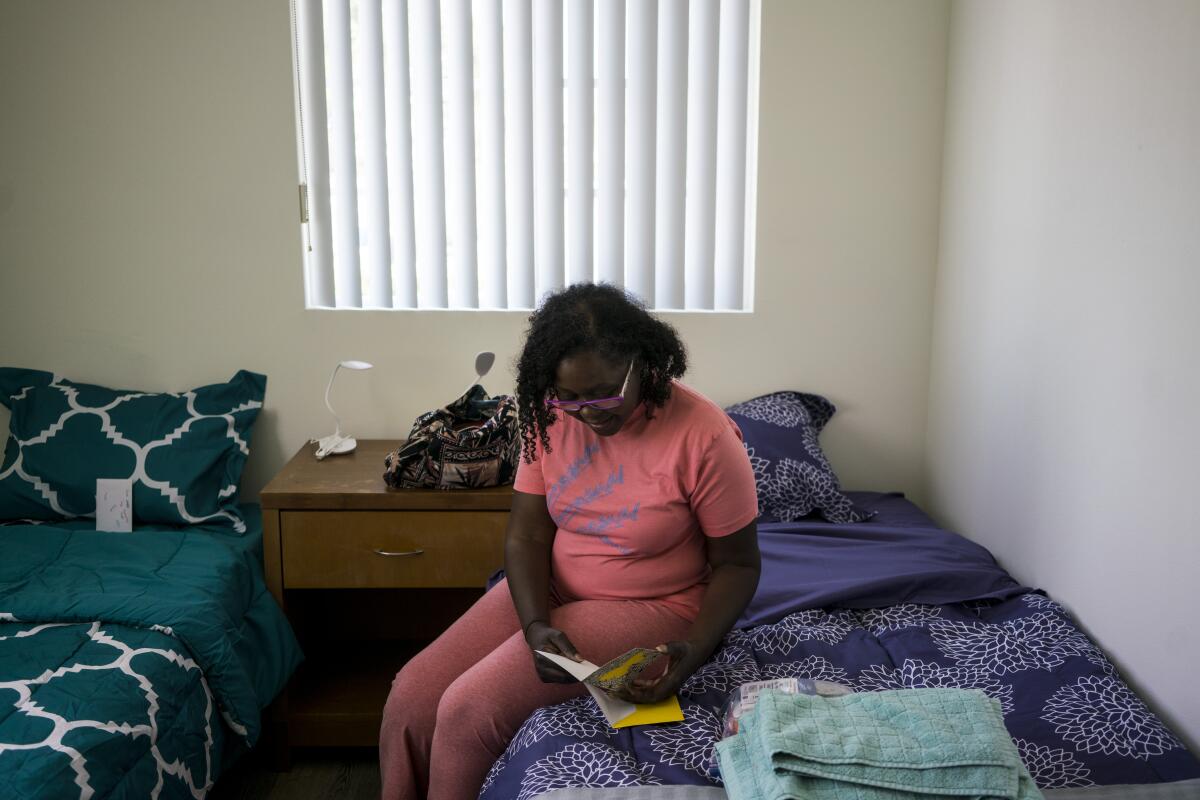
The couple initially worked with SHARE but have since parted ways with the group after finding that it couldn’t provide the support their residents needed. But they hired Estrada full time and continue to follow the philosophy of SHARE, including its reliance on self-help groups such as Alcoholics Anonymous.
Estrada shuttles among the three properties holding house meetings, giving residents pep talks, checking up on exercise and hygiene, mediating conflicts and, when necessary, shuffling roommates to get a better fit.
Roberts credits Estrada with resolving the turmoil that erupted, catching the couple off guard, soon after they opened their first house near 88th and Main streets with 28 residents. Estrada now manages all three houses smoothly, but she’s stretched too thin and her salary has broken the spreadsheet.
“We’ve proven that you can’t do it without losing money,” Roberts said.
To expand further, Haaven is seeking public funds to hire at least one more peer advocate each for two new duplexes, $2.4 million for the 24 homes they hope to open. That would be a public commitment of $5,000 per bed annually.
Haaven’s unorthodox method, and Roberts’ sometimes brusque manner in promoting it, didn’t immediately win support from conventional social services agencies. She said she has been shunned by the heads of nonprofits, bureaucrats and political leaders, all of whom have questioned her motives for supposedly seeking to profit off homeless people by placing them two to a bedroom.
But as public anger mounts over the spread of homeless encampments, doors are beginning to open, she said. Mayor Eric Garcetti’s deputy for economic opportunity visited one of the couple’s homes. In a statement, a spokesman for the mayor said Garcetti supports initiatives like Haaven because “they show how effective we can be when we think creatively and when everyone pitches in together to combat the homelessness crisis.”
United Way of Greater Los Angeles, which has been closely aligned with the conventional housing model, recently convened a working group to study shared housing. That could be anything from board-and-care homes to multiple bedrooms with a common living room and kitchen. The committee is considering Haaven’s shared-bedroom model as well, said Tommy Newman, the agency’s director of communications.
Haaven has also received encouragement, but so far no money, from the Los Angeles County Department of Mental Health. Keris Myrick, head of peer services for the agency, said Haaven could obtain funding for its peer specialists but would have to compete with other agencies in a bidding process.
At present it can’t do that because it is not an established contractor and can’t apply to be one until it’s been operating for three years. Roberts has begun talks with groups that have existing contracts in the hope of becoming a subcontractor.
Roberts, a former advertising specialist, and Betz, a pilot at Los Angeles Harbor, see themselves as challenging the mainstream system of building heavily subsidized projects with on-site services and private quarters for every resident. Costs for those projects have soared in recent years, often to more than $500,000 a unit.
As neophytes, they had hoped to prove a concept that others would replicate, Roberts said.
“It turns out nobody is really that interested in replicating,” she said.
So they decided to take the next step themselves. They’ve teamed up with Ron Miller, chief executive of the Los Angeles business accelerator StartEngine and an expert on rapidly scaling up business systems.
Miller said Haaven has lined up 10 investors willing to put up $50,000 each, the amount needed to get each new property furnished and leased. Investors will receive 5% returns annually and full repayment after five years or can choose to forgive the loan as a tax-deductible donation.
It’s unclear how an expanding Haaven would fit in with the countywide data system that social services agencies such as PATH use to manage the placement of homeless people and keep track of their status. Haaven doesn’t currently have access to that system.
PATH and other agencies continue to be responsible for them and provide their case management. They consider the couple to be landlords.
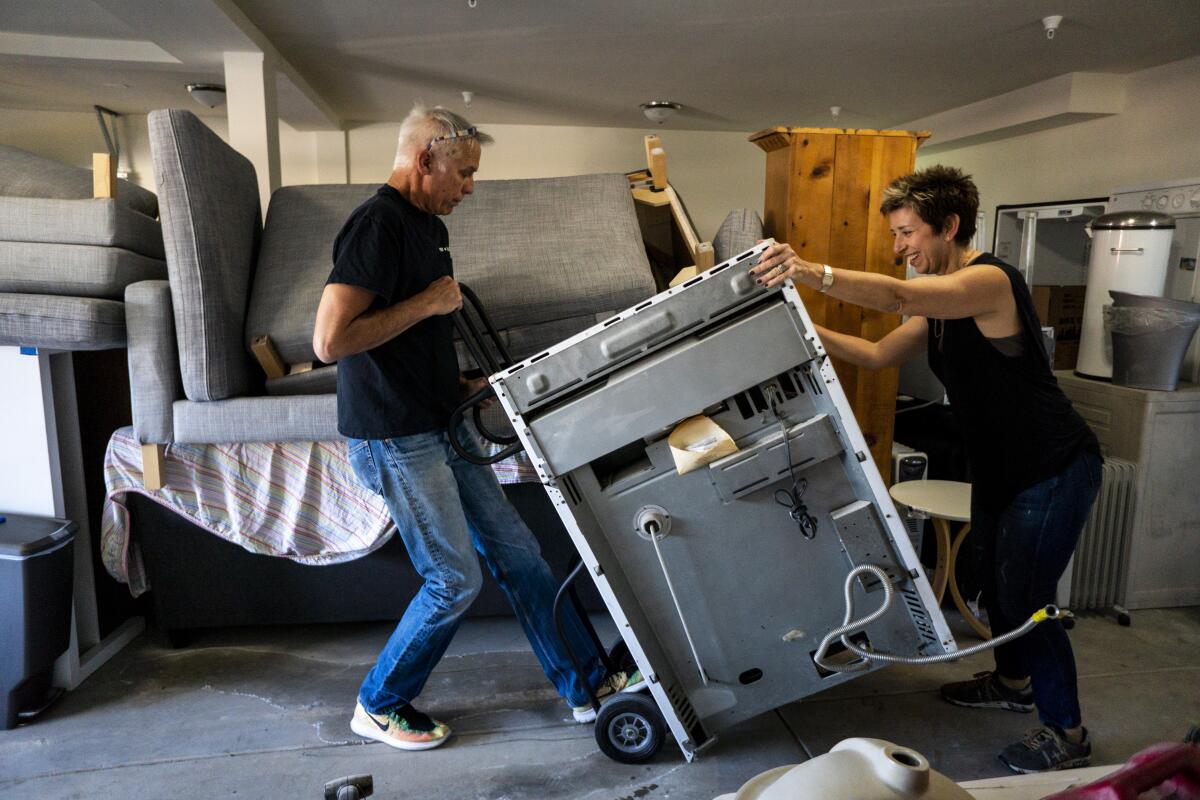
But Betz, who manages Haaven’s records, said more than half of its residents have come from referrals outside the system. He hopes to gain access to the county data system.
Meanwhile, Roberts and Estrada track all their residents as if they were Haaven clients. An anonymous tally posted on Haaven’s website is a snapshot of the difficulties that come with homelessness: A quarter had issues with health or substance abuse, half with mental illness and some all three.
“Anger issues too great” and “mental health too severe” are the comments on two former residents who did not adapt to the two-to-a-bedroom model.
More frequent entries, though, are “got a job,” “sobriety maintained” and “mental health improving.”
In addition to the 51 current residents, 47 have come and gone. One died of natural causes, six transferred to mental health facilities, 24 got other homes or reunited with families and 16 are unaccounted for or in jail.
Roberts counts that as an 83% success rate, but some of those now counted as failures, including the two in jail, may decide to come back. The doors will always be open, she said.
It’s a sentiment that reflects an engagement that Roberts did not foresee.
“We got into this because the system wasn’t making any sense to us,” Roberts said. “It wasn’t for this love of people. We came into this wanting to make all this systemic change. What we got out of it was all this love.”
She visits the homes regularly and is on a hugging basis with many of the tenants, whose names and stories she knows. She knows it’s a closeness that can’t survive the bigger future she has planned.
One thing she vows not to lose is the decorator’s touch.
“Every home will have art,” Roberts said. “It has to feel like a home.”
More to Read
Sign up for Essential California
The most important California stories and recommendations in your inbox every morning.
You may occasionally receive promotional content from the Los Angeles Times.
